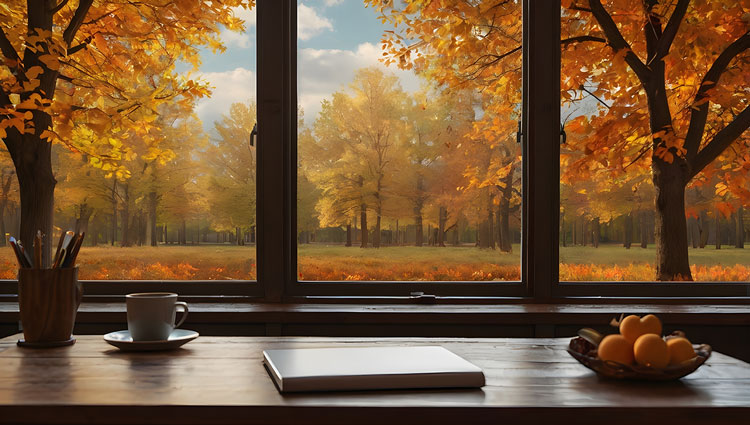No matter who sits in the Oval Office, one thing is certain: The next four years are yours to shape.
There are three types of people when it comes to navigating times of change:
The first group is illusory and out of touch. In this group, some believe everything will magically improve, while others are in full panic mode. If you fall into either camp, you’re giving away too much power to circumstances beyond your control. Many in this group have only small amounts of information, yet they still run with it—often making decisions based on an incomplete or erroneous understanding. This isn’t good for personal growth or leadership; true progress comes from deeper knowledge and thoughtful action.
The second group is waiting to see what happens. “Let’s just see how this all plays out,” they think. There’s nothing wrong with that — but waiting on the sidelines rarely leads to growth. If you’re in this group and plan to stay there (nothing wrong with that!), stick around—we’ll share tools on our platforms to help you move forward with purpose.
The third group? They’re ready. These are the people who say, “No matter what’s happening around me, I’m committed to making these next four years my best yet.” They know success isn’t about luck. It’s about taking control where they can: learning, growing, and doing the work most people won’t. To quote Zig Ziglar, “Your attitude determines your altitude.” Those who registered for the Planned Giving Boot Camp are from this group.
Here’s the truth:
-
- Strong organizations have collapsed in booming economies.
-
- Struggling organizations have found ways to thrive even in downturns.
-
- If you’re committed to excellence, you can succeed no matter what the headlines say.
The Power of Choice
The difference between those who thrive and those who merely survive often comes down to choice. Will you focus on problems, or on opportunities? Will you dwell on what’s out of your hands, or double down on personal growth and leadership?
If you feel stuck, start by asking yourself: What can I control today? Maybe it’s improving your skills, expanding your network, or showing up with a stronger mindset. Small, intentional actions lead to momentum.
Mindset Matters
The most successful people don’t let outside events dictate their progress, whether they agree with those events or not. Instead, they focus on resilience, adaptability, and continuous learning. They know every setback can be a setup for a stronger comeback.
They don’t sit on the sidelines — they stay in the game. They don’t just watch commercials — they create them.
Think about the greats: athletes, entrepreneurs, and leaders. Every one of them has faced moments of uncertainty, but their mindset made the difference. They chose to rise.
So can you.
It’s Time to Take Action
Growth doesn’t happen by accident. It’s a series of choices made every day. Here are a few ways you can take charge right now:
-
- Forget Who Is President: Whether you’re on the left or right, Trump is not going to show up at your next performance review. You are in charge.
-
- Set Clear Goals: Define what success looks like for you. Be specific: “Become a productivity ninja!” is a lot clearer than just, “Do better.”
-
- Build Your Skills: Read. Listen. Attend workshops. Invest in yourself — because binge-watching documentaries doesn’t count as professional development.
-
- Expand Your Network: Surround yourself with people who challenge and inspire you. Remember, networking isn’t just collecting business cards.
-
- Stay Consistent: Progress isn’t about perfection. It’s about showing up. As Woody Allen once said, “80% of success in life is just showing up.”
Which Group Are You In?
The next four years will pass, no matter what. Stop thinking about who the next president will be. The question is, will you grow, or will you coast? Will you lead, or will you follow?
Decide now. Let’s make these years the best yet — together.








These words are so true as we position ourselves for success in 2025! So many NPO’s can benefit from meaningful and intentional bi-partisan thinking to achieve short-term goals and long-range vision.
Having a plan and focus for the future will always be necessary. We need to control what is within our power to shape! Like investing, the sooner you start setting aside that first dollar ultimately results in long-term stability and growth. How many in the nonprofit space wish they would have started an endowment years ago. The time for building for future stability is now. I fall into the third group, but I do prefer an environment where obstacles are broken down!
Viken and Jay are 100% right. It is up to us to be in charge of what we can control (or at least what we believe we can control). My goals, my plan, my attitude, continuing to learn, building strong relationships all fall into this category. I don’t know about you, but 2024 was a spectacular year by every measure. What is my–and your–plan for making 2025 even better?
I can’t tell you how many times I have told nonprofit leaders: focus on your work, not on politics, unless politics IS your work (and it probably isn’t!). If you’re running a health clinic or a homeless shelter, you should be focused on raising money and serving those who need your help, not opining about politics on your nonprofit’s social media pages.
Far too many nonprofit leaders wring their hands every time an administration (federal, state, or municipal) changes hands, when that bandwidth would be better put to use meeting with new donors, writing up a new fundraising plan, or reaching out to new volunteers.